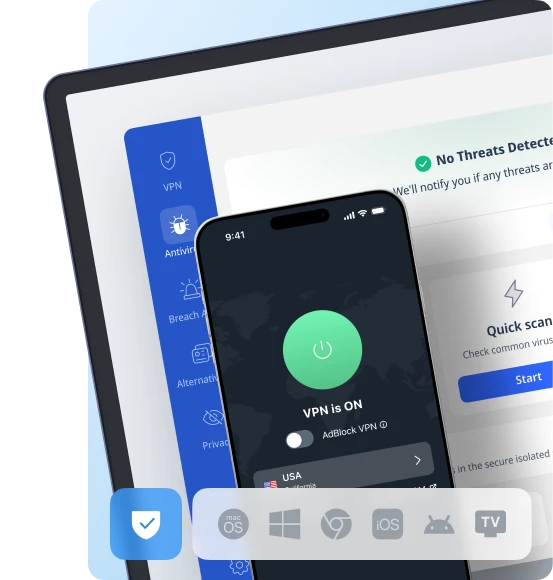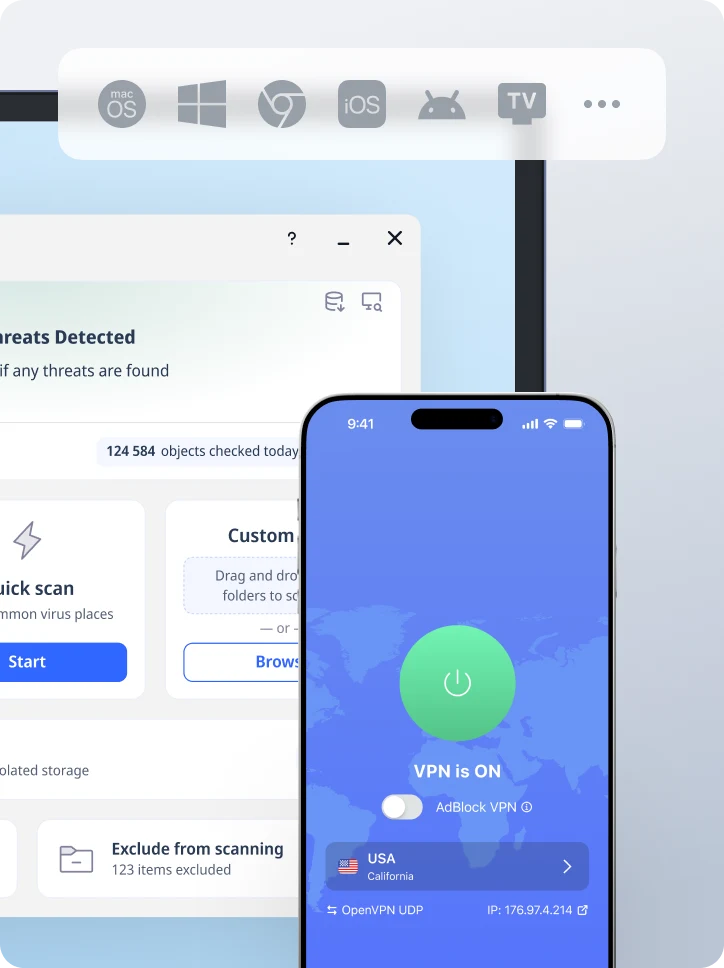Is Plaid Safe? A Deep Dive into Giving Your Bank Information to Plaid
Millions of users use Plaid to connect bank accounts to their financial apps. But there is a concern: is Plaid safe and provides enough security for sharing banking information and details. This article will review Plaid security methods and guide you on how to protect your financial life when using Plaid services.

Plaid safety measures
Plaid works as a financial technology service that connects your banking accounts to financial technology companies Venmo, Robinhood, and Mint. When a user links their financial account to various financial apps using Plaid, they are redirected to their financial institution’s bank login portal, where they enter their login credentials. Overall, Plaid uses such security measures as:
🔏Data encryption. Plaid applies transport layer security (TLS) and advanced encryption standard AES 256-bit to safeguard your data while it moves between devices and while it remains stored. When you provide your banking details Plaid encrypts them so outsiders cannot read them.
🔏Tokenization. You must provide Plaid with your banking credentials, so the service can generate tokens for third-party application access. Plaid provides special access keys to apps who then gain your account information while remaining unaware of your login credentials.
🔏Data minimization. Plaid transfers the minimum required information to complete each task. Plaid will not show you your complete transaction history even though you only want to see your bank account balance.
🔏Continuous monitoring. Every day the company scans its systems for suspicious access and irregularities to stop security breaches from harming customers.
🔏Compliance. Plaid follows important data protection rules such as GDPR and CCPA which control the way user data should be handled.
Nevertheless, Plaid leaves several safety concerns we have to discuss.
Plaid safety concerns
Despite Plaid’s strong security reputation, incidents and controversies around it continue to affect its operations:
☠️Data privacy lawsuits. Plaid resolved a 2021 $58 million lawsuit that charged it with excessive data collection and false information about user data usage. Plaid defended itself, but the lawsuit made people wonder about its truthfulness in sharing user data.
☠️Overcollection of data. Plaid obtains more account details than users expect according to certain critics. Plaid may access all your account information, including transaction history and loan details, even when you verify your account only with a financial institution. To understand how Plaid ensures security, it is important to look at the various measures it uses.
☠️Third-party exposure. Plaid keeps its systems secure, but the protection of shared data depends on the security measures of the third-party applications. Furthermore, Plaid’s independent security testing and certification processes ensure that its systems exceed industry standards for security and data protection, demonstrating how Plaid works to maintain user trust.
☠️Lack of user control. Users do not have clear tools to restrict the personal financial data that Plaid collects from their accounts.
Risks and Limitations of Plaid
While Plaid provides a secure and convenient way to connect financial accounts to apps, there are some risks and limitations to consider. For example, if a user’s login credentials are compromised, an unauthorized party may be able to access their financial information through Plaid.
Additionally, Plaid’s system may not be compatible with all financial institutions or apps, which can limit its usefulness. However, Plaid has implemented robust security measures, including multi-factor authentication and encryption, to minimize the risk of unauthorized access. Moreover, Plaid’s Plaid Portal provides users with control over their financial information, allowing them to view and manage their connected accounts and revoke access to any app at any time.
How to use Plaid safely
You can secure your financial information when using Plaid by following these steps:
✋Review app permissions. Read all permission details before logging into Plaid to link it to financial apps. Find out what information the app wants to access alongside its specific purpose for needing it.
✋Enable two-factor authentication (2FA). Every financial account must implement two-factor authentication (2FA) as the main security measure just like top online banking security standards.
✋Regularly monitor accounts. Regular checks of your bank account data will help you identify unauthorized spendings. Strong and secure passwords should be used to protect financial information.
✋Stop the connection to any financial app when it is no longer needed. Pull your financial data access from Plaid when you stop using the app.
✋Use a VPN. Your online data stays more secure when you use VeePN because it creates an encrypted Internet connection that makes it impossible for hackers to monitor and collect. But why VeePN?
Why you should pick VeePN to protect your Plaid use
Plaid encrypts data but leaves it exposed to hackers when you use public WiFi networks. That’s where VeePN comes in to help you securely connect your financial information.
By encrypting your complete online connection, VeePN stops anyone from monitoring your activities, ensuring secure connections when you use Plaid to link financial apps. VeePN protects all your Internet activity when you use Plaid to create accounts or check balances in linked apps.
VeePN connects users to a fast and reliable network through its vast 2500+ servers network across, saving resources by maintaining efficient and secure connections. A single VeePN account safeguards up to ten devices including your smartphone, tablet, and personal computer, ensuring that your sensitive and financial data remains protected.
Download VeePN now and enjoy a 30-day money-back guarantee!
VeePN is freedom
Download VeePN Client for All Platforms
Enjoy a smooth VPN experience anywhere, anytime. No matter the device you have — phone or laptop, tablet or router — VeePN’s next-gen data protection and ultra-fast speeds will cover all of them.
Download for PC Download for Mac IOS and Android App
IOS and Android App
Want secure browsing while reading this?
See the difference for yourself - Try VeePN PRO for 3-days for $1, no risk, no pressure.
Start My $1 TrialThen VeePN PRO 1-year plan







